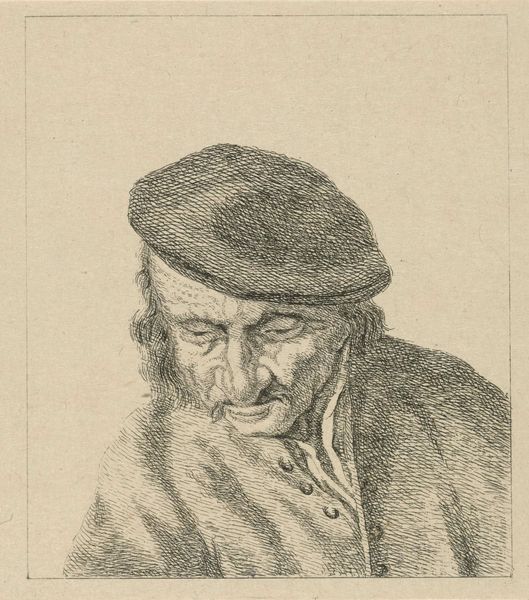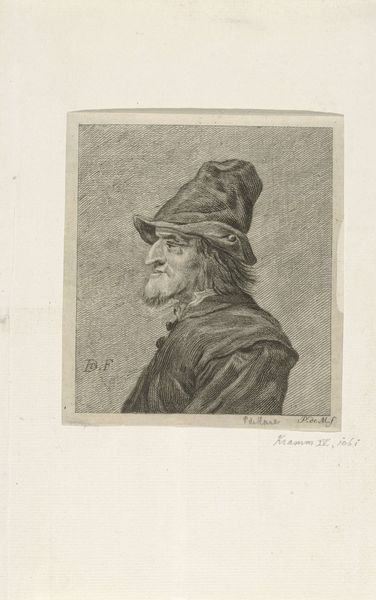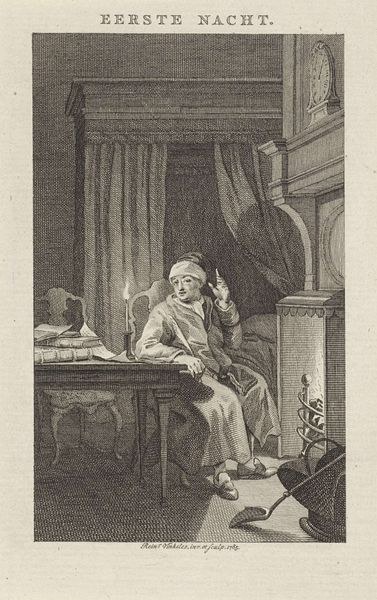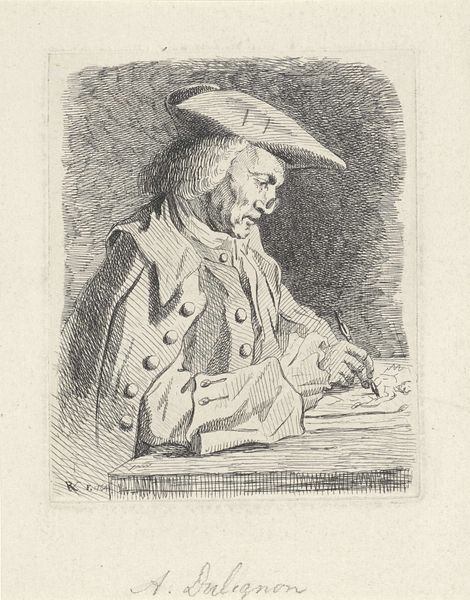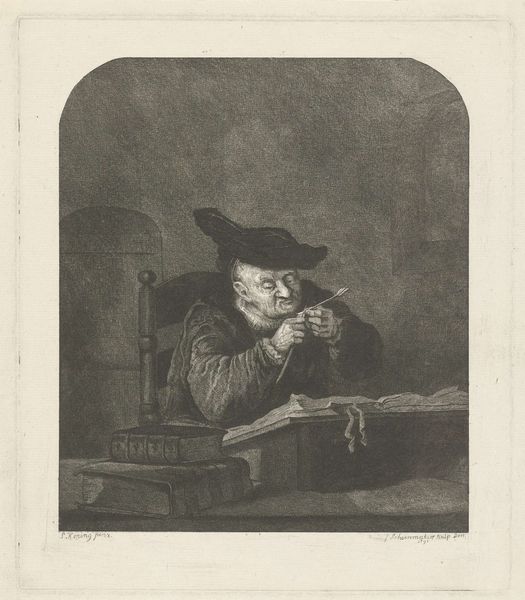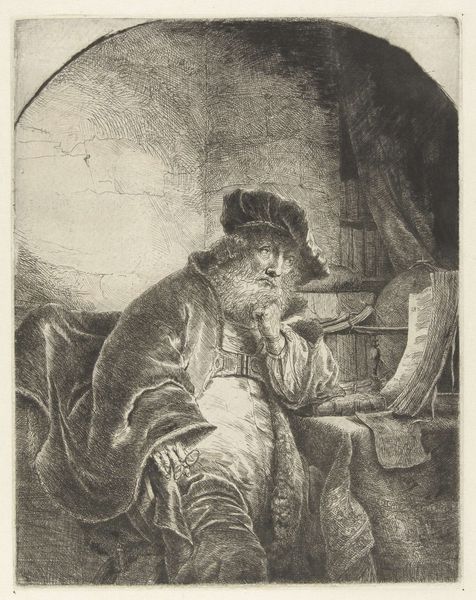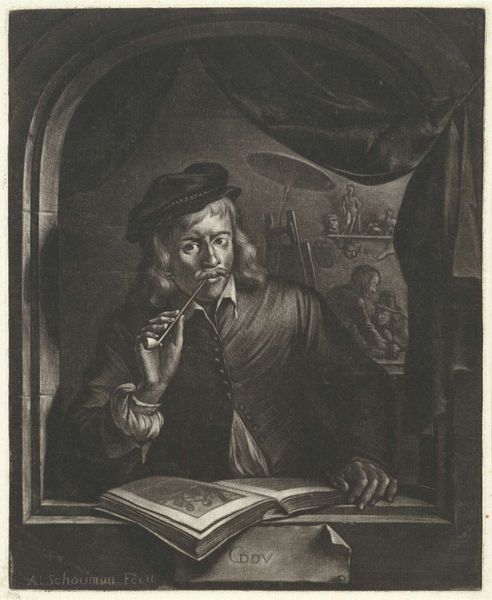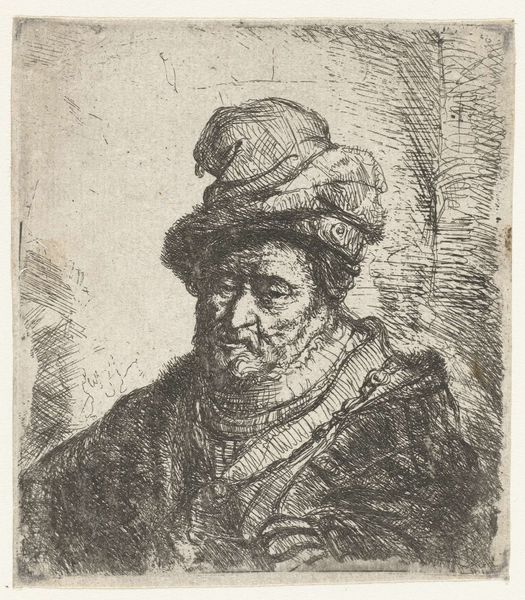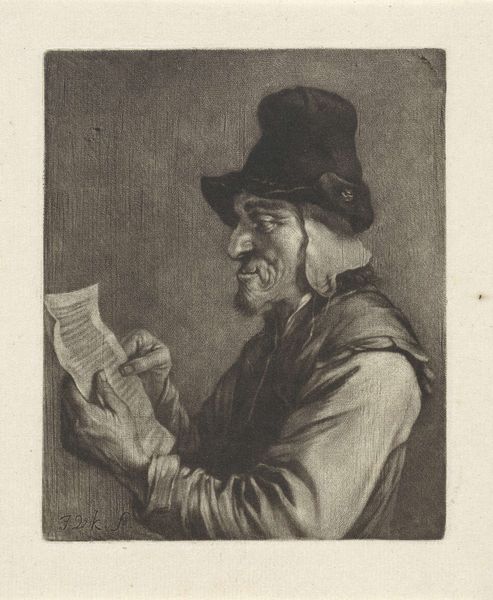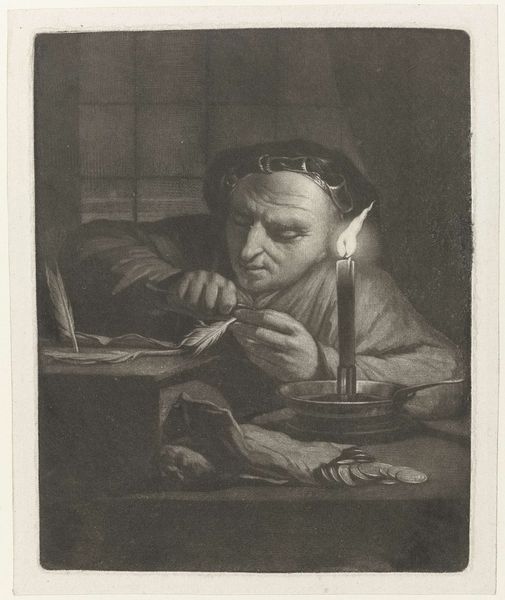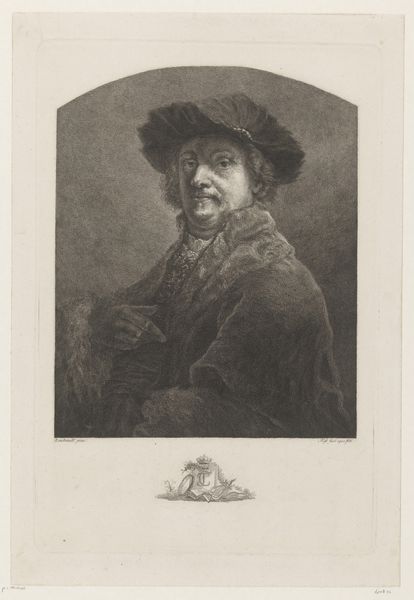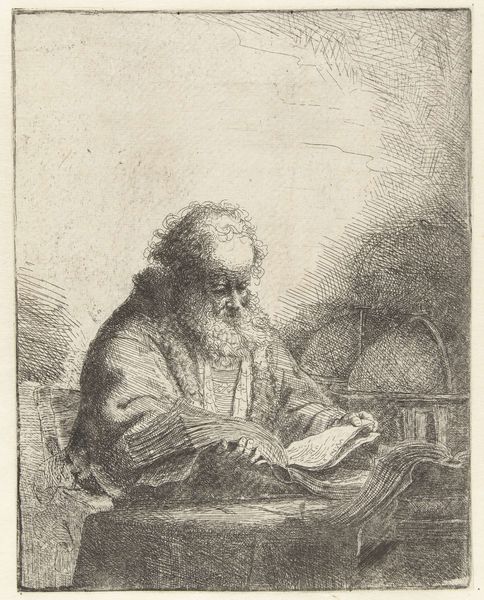
Dimensions: height 169 mm, width 130 mm
Copyright: Rijks Museum: Open Domain
Editor: This is Caspar Jacobsz. Philips' "Portret van Pieter Bodding van Laer," an engraving made sometime between 1752 and 1789, now at the Rijksmuseum. It strikes me as a very self-aware depiction of an artist in his studio. What catches your eye in this portrait? Curator: Well, instantly, I notice the layering of identity conveyed through symbolic imagery. Pieter van Laer, or "Bamboot," isn't just represented; his persona is constructed. Note the easel, palette, and tools - emblems of his profession, yet he’s adorned with a feathered hat and a fur-lined coat, suggesting status and artistic flair. Editor: That's a great point, the details in his attire really stand out. It feels like a statement. Curator: Precisely! Think about what “Bamboot” signified – someone known for scenes of everyday life, often depicting peasants and common folk. But here, he’s presented with aristocratic visual cues. Isn't there an intentional play with perception? A commentary, perhaps, on the artist's role and self-image? How does this visual narrative contribute to our understanding of van Laer’s cultural position? Editor: So, the symbols used contradict what he was known for? That's fascinating. Almost like he is crafting his legacy in real-time? Curator: Exactly. This print freezes a constructed identity, influencing how we remember him. Every detail tells a story that helps connect to cultural memories, even today. The power of symbols is timeless. Editor: It’s incredible how much can be unpacked from a single image. I hadn't considered how artists curated their own image! Thanks! Curator: My pleasure. I hope you start to appreciate the depth and symbolic load of these artistic decisions from now on!
Comments
No comments
Be the first to comment and join the conversation on the ultimate creative platform.
